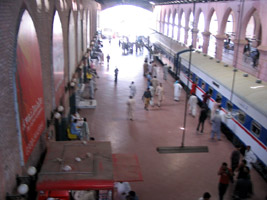I say Hello, you say Namaste
Although Hindi is the official language of India there are over 1600 other dialects (variations in of one language which make them 'new' languages) spoken in the country. The languages and dialects spoken are specific to different regions in India.
Besides Hindi, English is also widely spoken. The regional dialects include Assamese, Bengali, Gujarathi, Kannada, Kashmiri, Malayalam, Marathi, Oriya, Punjabi, Sanskrit, Sindhi, Tamil, Telugu and Urdu.
Must learn phrase in Hindi
Accha!
One of the most useful words to know is accha. Its meanings include (but are not limited to!): good, excellent, healthy, well, OK, really?, awesome!, and hmm...
If you learn no other word, remember this one!
Money, cash, dough, moolah
The Indian rupee (Rs) is divided into 100 paise (p), but paise coins are increasingly rare.
Coins come in denominations of 5, 10, 20, 25 and 50 paise, and Rs 1, 2 and 5; notes come in Rs 10, 20, 50, 100, 500 and 1000 (this last bill can be hard to change outside banks).
ATMs linked to international networks are common in most towns and cities in India. However, carry cash or travellers cheques as backup in case the power goes down, the ATM is out of order, or you lose or break your plastic.
The rupee is also accepted as currency in Nepal and Bhutan if you are continuing your travels to either of those countries.
The current exchange rate to the Australian dollar (as of 04/11/2010) is 1 AUD = 44 INR





